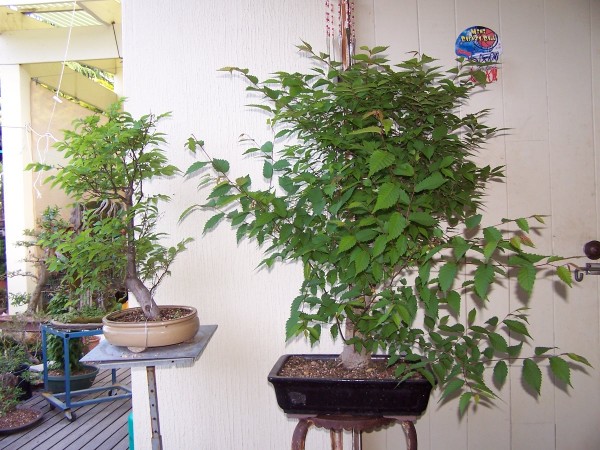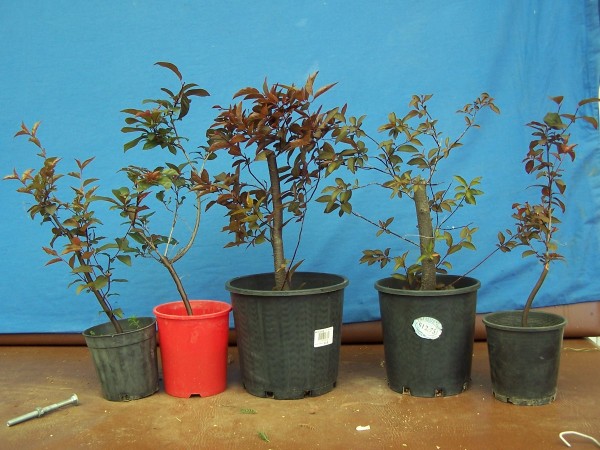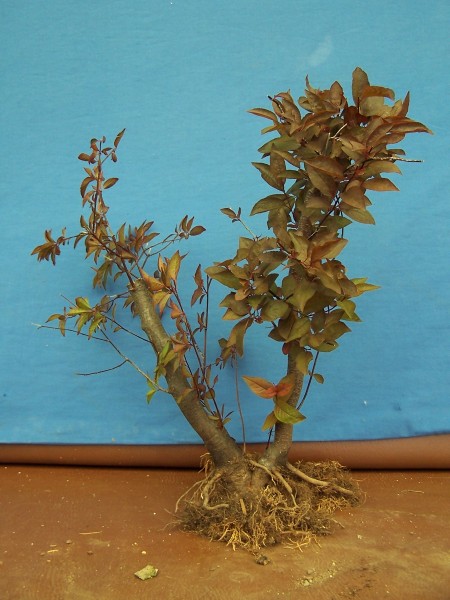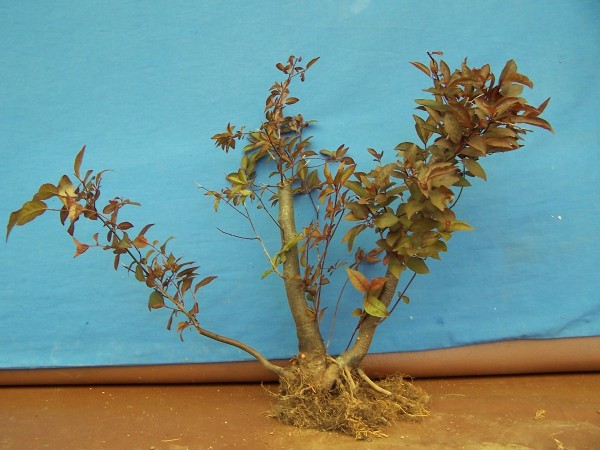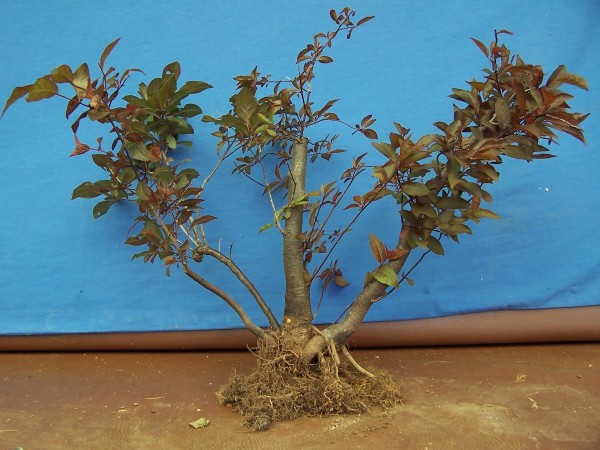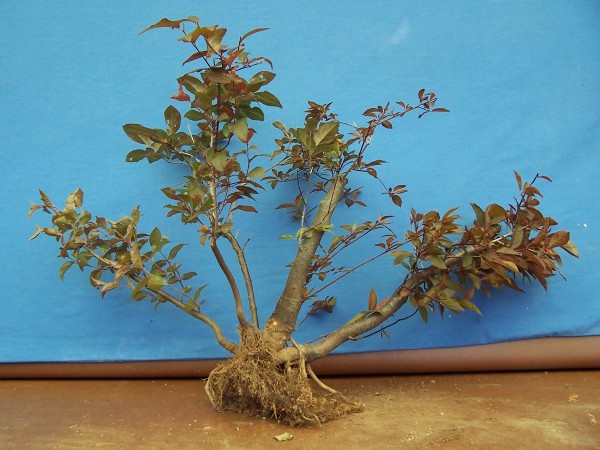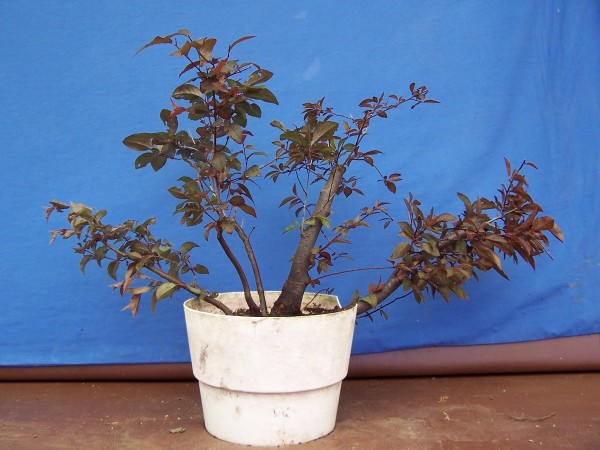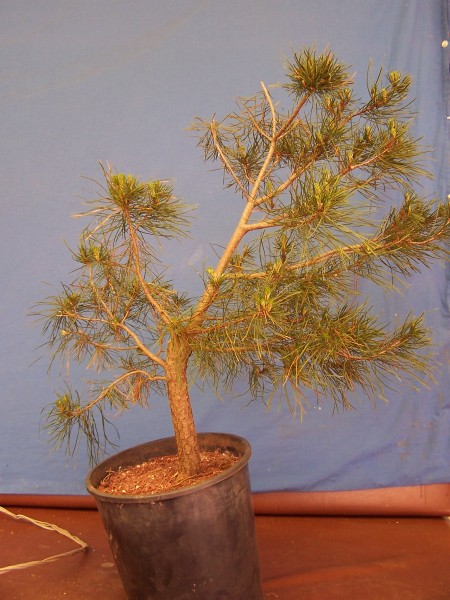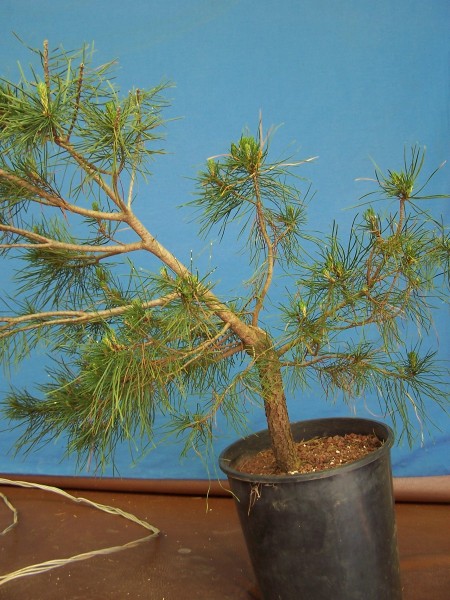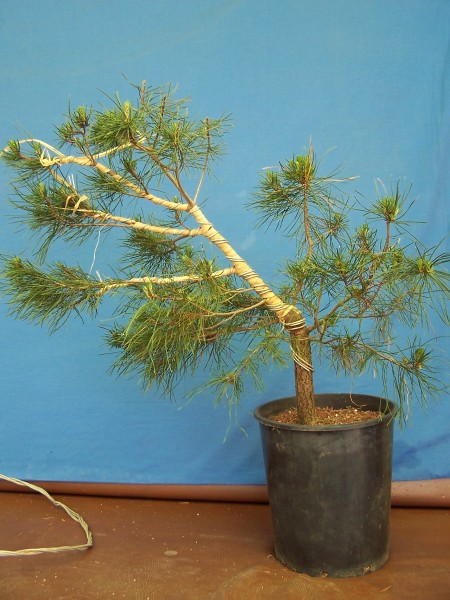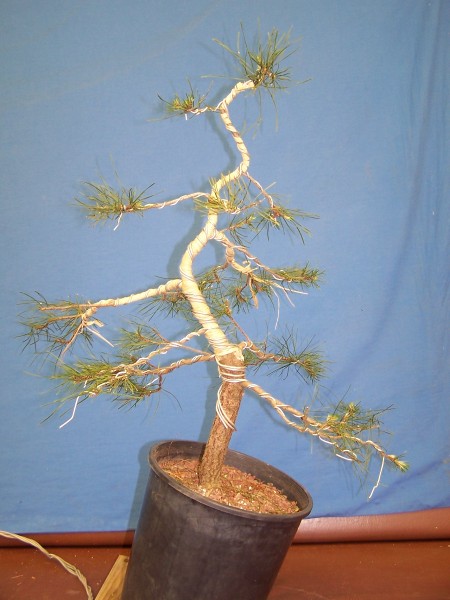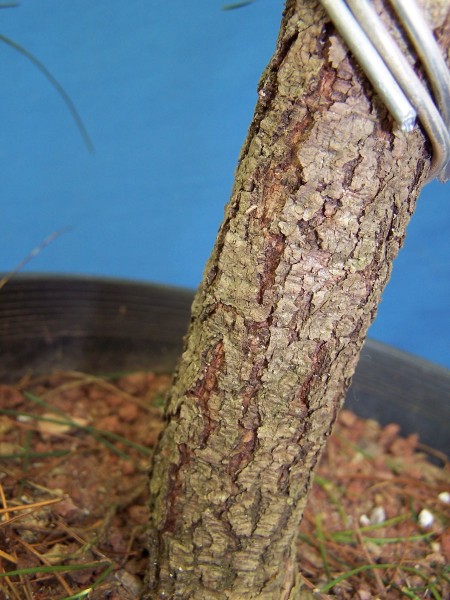This was a collected tree which was growing in water logged or bone dry red clay .It constantly died back over the 12 or so years prior to its removal a couple of years back . When it was removed a found it to be buried 300mm deeper than the root ball ??by whomever planted it ‘ The root ball itself was very poor which is understandable, so it was potted up in a quality free draining mix for a season , then a set of multiple layers were placed onto the trunk .Last year they were severed and today the original 90mm base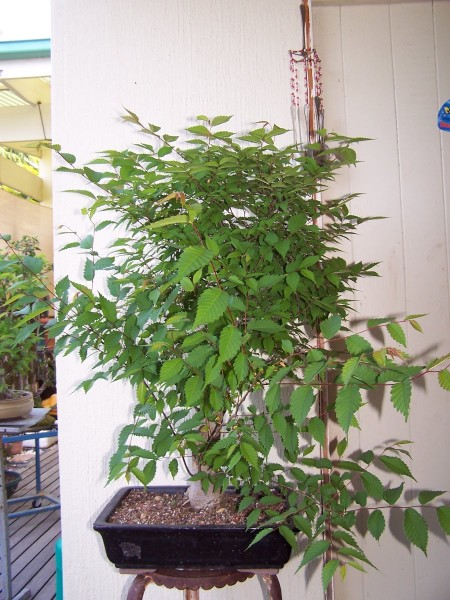 and the middle layer got some much needed root work/Narebri improvement .
and the middle layer got some much needed root work/Narebri improvement .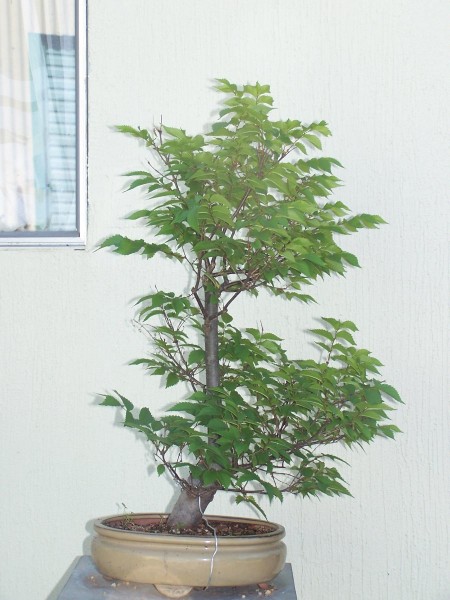 Using a method i learned from a Member of Ausbonsai.com and have successfully employed on Maples , Plums and Chinese Elms and are soon to trial on pines i set to work . I have also used this method on the layer of the mid layer taken off last year , to see if it works above the ground . No reason why it shouldn’t but nothing ventured nothing gained . First of all the plant remained in its pot and the roots were inspected by removing some top soil and making the decision form there .
Using a method i learned from a Member of Ausbonsai.com and have successfully employed on Maples , Plums and Chinese Elms and are soon to trial on pines i set to work . I have also used this method on the layer of the mid layer taken off last year , to see if it works above the ground . No reason why it shouldn’t but nothing ventured nothing gained . First of all the plant remained in its pot and the roots were inspected by removing some top soil and making the decision form there .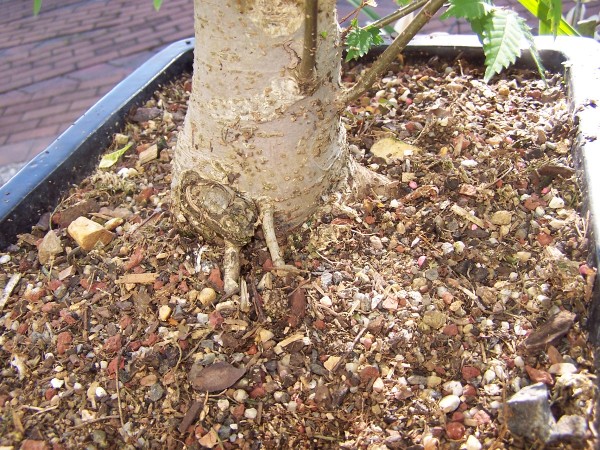 .I tilted the tree over just enough so i could drill a series of 2.5mm hole where required around the appropriate section of the base
.I tilted the tree over just enough so i could drill a series of 2.5mm hole where required around the appropriate section of the base 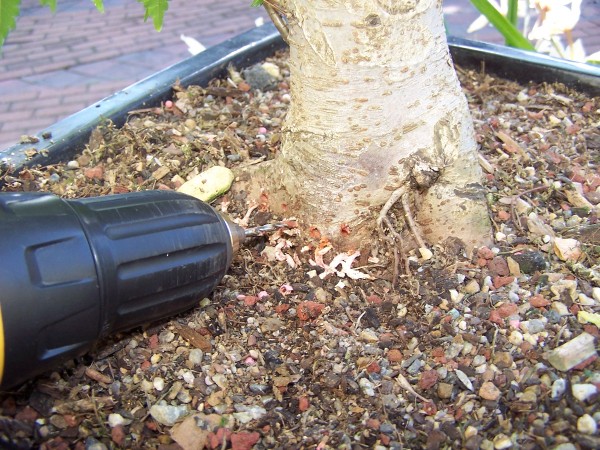 and trunk in the case of the layer .Using bamboo toothpicks snapped in two simple soak water and dip the blunt end into some hormone powder and insert into the drill holes
and trunk in the case of the layer .Using bamboo toothpicks snapped in two simple soak water and dip the blunt end into some hormone powder and insert into the drill holes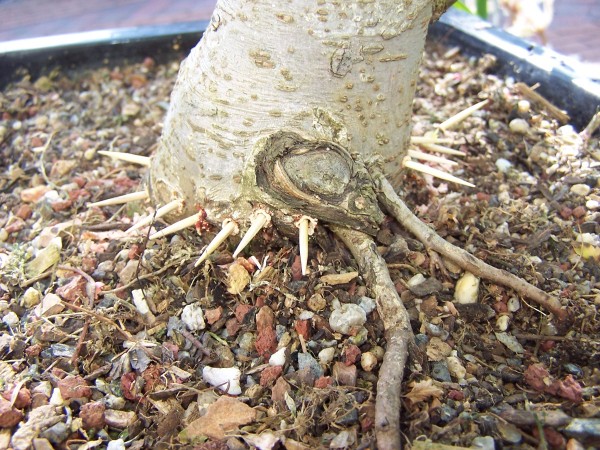 . I have in the past used soft wood toothpicks and the strike rate was less than 60 % bacteria and decay seemed to destroy all hope of the roots forming . With the tooth picks set a blend of Bonsai mix with added spagnum moss is placed into or around the base
. I have in the past used soft wood toothpicks and the strike rate was less than 60 % bacteria and decay seemed to destroy all hope of the roots forming . With the tooth picks set a blend of Bonsai mix with added spagnum moss is placed into or around the base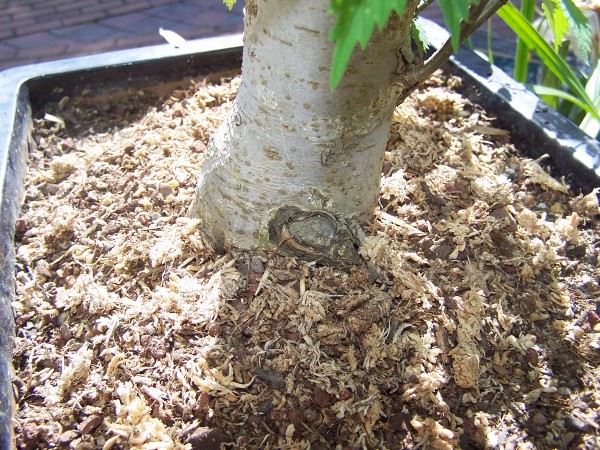 /trunk , which ever the case maybe
/trunk , which ever the case maybe 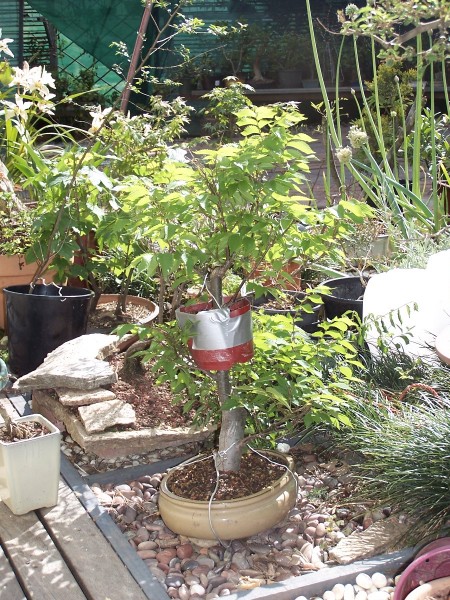 . Because the tree has been disturbed i have used a probe/chop-stick to settle the soil back around the roots as per a normal re-pot . With this task complete a good soak to settle the soil and potted layer , i wont trim these 2 tree’s ,
. Because the tree has been disturbed i have used a probe/chop-stick to settle the soil back around the roots as per a normal re-pot . With this task complete a good soak to settle the soil and potted layer , i wont trim these 2 tree’s ,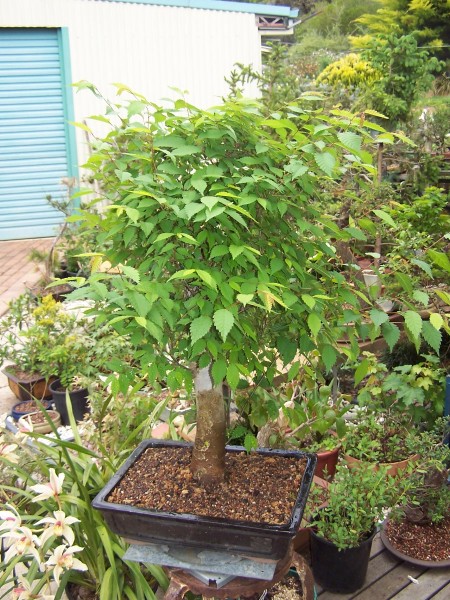 allowing all the growth to grow unhindered for a few months ,then cut back by 50 % allowing the excess growth to generate the power to produce the new roots .
allowing all the growth to grow unhindered for a few months ,then cut back by 50 % allowing the excess growth to generate the power to produce the new roots .
Cheers Alpineart

